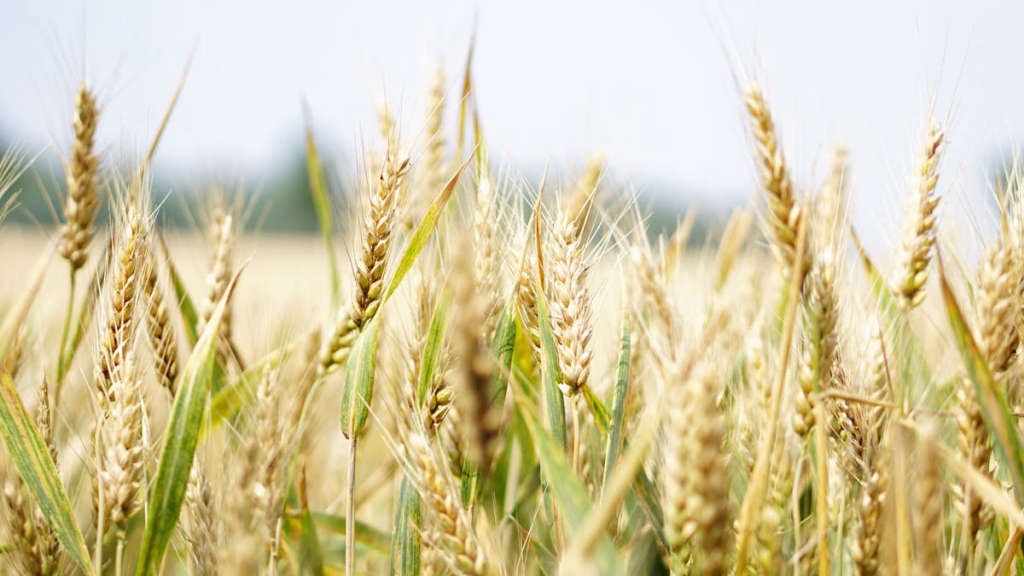Life has a way of surprising us, especially in the kitchen. When you think about cooking, the versatility of wheat flour recipes often takes center stage. In this article, we will explore ten creative dishes that showcase the wonders of wheat flour, transforming simple ingredients into delightful meals. Whether you are a seasoned cook or just starting your culinary journey, these recipes are sure to inspire you to whisk up something wonderful!
Main Points
- Discover the versatility of wheat flour in various dishes.
- Unleash your creativity with innovative recipes.
- Learn cooking tips for using wheat flour effectively.
- Enjoy delicious meals that are easy to prepare.
- Explore the cultural significance of wheat flour in global cuisines.

Mastering the Art of Wheat Flour: Techniques for Perfectly Fluffy Breads
When it comes to baking, few ingredients are as fundamental as wheat flour. It serves as the backbone of our beloved breads, imparting structure and texture. Yet, the journey to achieving perfectly fluffy breads can often seem daunting. Many home bakers struggle with the nuances of wheat flour and what makes it rise to fluffy perfection. In this article, we’ll explore essential techniques that can elevate your bread-making from ordinary to extraordinary, ensuring you produce loaves that are both tender and airy.
Understanding Wheat Flour Types
Not all wheat flour is created equal. There are several types, each possessing unique properties that affect the outcome of your baking. Here’s a brief overview:
- All-Purpose Flour: Versatile and commonly used, all-purpose flour provides a balanced protein content suitable for many breads.
- Whole Wheat Flour: Rich in nutrients and fiber, whole wheat flour can yield a denser loaf but adds a unique flavor.
- Bread Flour: With a higher protein content, bread flour is ideal for yeast breads, enhancing gluten development for a chewier texture.
Familiarizing yourself with these types will help you select the right wheat flour for your recipe. However, it might also lead to confusion on when to use each type. For instance, do you ever find yourself debating whether to use whole wheat or all-purpose for your next loaf? The key lies in understanding your desired outcome.
Mastering the Techniques
Now that you have an understanding of wheat flour types, let’s delve into some effective techniques for making your bread fluffy and delicious.
- Proper Measurements: Accurate measurement of flour is critical. Scoop directly with a measuring cup can lead to too much flour. Instead, spoon the flour into your cup and level it off.
- Hydration Levels: Adjusting the water content can dramatically change the texture. A well-hydrated dough will lead to a softer, fluffier bread. Experiment with adjusting the liquids slightly.
- Kneading Technique: Knead your dough sufficiently to develop the gluten structure. A common point of confusion is knowing when to stop. It should be smooth and elastic but not sticky.
Moreover, incorporating these techniques may lead to some surprises along the way. For example, you might think you over-kneaded, but your dough can still yield wonderful results. Yet, the importance of patience should not be overlooked. Allowing your bread to rise adequately can transform an average loaf into a heavenly creation.
Conclusion
Mastering the art of wheat flour is not merely about following a recipe; it requires a blend of science and intuition. By understanding the types of flour and honing your techniques, you can navigate the complexities of bread-making with confidence. So, roll up your sleeves, grab your favorite flour, and embark on your baking adventure! What experiences and discoveries have you had in your baking journey? It’s time to share them and continue exploring the delightful world of bread!

Exploring Global Flavors: Unique Savory Dishes Using Wheat Flour
Wheat flour serves as a foundation for countless culinary creations around the world. Its versatility allows it to play a central role in both traditional and contemporary dishes. From fluffy pastries to chewy noodles, there is an abundance of savory delights that showcase the global love for this humble ingredient. In this article, we dive into some unique savory dishes enriched with wheat flour, celebrating how different cultures bring their flavors to life.
The Art of Making Dumplings
Many nations boast their own version of dumplings, often made with wheat flour. These doughy pockets are typically filled with savory ingredients. Take Chinese jiaozi, for example. The delicate wrappers encase seasoned meats and vegetables. They are either steamed, boiled, or pan-fried, presenting a delightful combination of textures. On the other hand, Eastern European pierogi offers a similar concept but with unique fillings like mashed potatoes or sauerkraut. The beauty lies in their variations, showcasing local produce and spices.
Flatbreads: A Universal Delight
Another exceptional use of wheat flour is in the making of flatbreads. From naan in India to tortillas in Mexico, flatbreads serve as the backbone of various cuisines. They are often used to scoop up curries, wrap grilled meats, or simply enjoyed with butter or dips. Each type tells a story about the region it comes from. Naan, for instance, is typically cooked in a tandoor oven, giving it a distinctive smoky flavor that complements rich dishes beautifully. Conversely, the thin, pliable nature of tortillas makes them perfect for holding together fillings in a burrito.
Pasta: The Italian Staple
Let’s not forget about pasta, which is arguably one of the most beloved savory dishes derived from wheat flour. Though Italian cuisine excels in crafting various pasta forms, it’s a culinary staple across numerous cultures. Fresh fettuccine, delicate ravioli, or hearty gnocchi, the possibilities are indeed endless. Surprisingly, the dough for each type varies slightly, reflecting the region’s ingredients and cooking techniques. It’s fascinating how a simple combination of wheat flour and water can yield such an array of textures and flavors.
A Global Table of Wheat Flour Dishes
| Dish | Country | Description |
|---|---|---|
| Jiaozi | China | Stuffed dumplings, boiled or pan-fried. |
| Pierogi | Poland | Dumplings with potato, cheese, or meat fillings. |
| Naan | India | Leavened bread typical in Northern Indian cuisine. |
| Tortilla | Mexico | Thin flatbread made from corn or wheat flour. |
| Fettuccine | Italy | Flat pasta traditionally served with creamy sauces. |
In conclusion, exploring how wheat flour is utilized in savory dishes across cultures unveils a rich tapestry of flavors and techniques. Each dish tells a story, weaving together tradition, innovation, and the joy of cooking. As we continue to appreciate these global flavors, we realize that the simplicity of wheat flour leads to extraordinary culinary experiences.

Sweet Sensations: Innovative Desserts to Elevate Your Baking Game
In the world of baking, the phrase “the sweeter, the better” has never held truer. Today, we dive into a realm where traditional recipes meet imaginative flair. Prepare your palate as we explore innovative desserts designed to elevate not just your baking skills, but also the overall experience of indulging in sweet treats.
The Art of Flavor Pairing
When crafting remarkable desserts, one must first consider the alchemy of flavors. For instance, the combination of salty and sweet can create an unexpected yet delightful sensation. Imagine a rich chocolate tart topped with a sprinkling of sea salt. This contrast doesn’t merely tantalize the taste buds; it transforms an ordinary dessert into a sensational masterpiece. Moreover, don’t shy away from playing around with herbs. Basil-infused strawberry sorbet, anyone? This daring choice not only adds vibrancy but also layers of complexity to your dessert.
Texture plays an equally crucial role in dessert innovation. Think about the delightful crunch of a caramelized topping on a soft cheesecake or the juxtaposition of creamy panna cotta with a crisp biscuit base. By carefully balancing textures, you elevate the overall enjoyment factor. In essence, an extraordinary dessert should not solely appeal to the sense of taste; it must engage all the senses, creating an unforgettable experience that resonates long after the last bite.
As we venture deeper, the aesthetic appeal cannot be overlooked. Bright, vibrant colors not only catch the eye but also evoke emotions. This is particularly true in the realm of desserts. Consider incorporating layers of vivid fruit coulis or edible flowers into your creations. These stunning elements not only enhance the visual appeal, but they also hint at the flavors waiting to be discovered. The artistry involved in plating desserts can take an otherwise simple dish and elevate it to new heights.
There’s something special about revisiting childhood favorites with a modern twist. Think of a classic cheesecake transformed into a deconstructed version – a beautifully arranged plate showcasing each element, from the curd to the crust, inviting diners to savor each component individually. This kind of reimagining pays homage to the original while igniting a sense of nostalgia complemented by a fresh perspective. The blend of familiarity and novelty is key.
Conclusion: Your Baking Journey Awaits
In conclusion, it’s clear that the possibilities in the realm of dessert baking are endless. By experimenting with innovative flavor combinations, textures, colors, and modern interpretations of classic recipes, you can uplift your baking game to extraordinary heights. So gather your ingredients, unleash your inner pastry chef, and embark on this sweet journey that promises not only satisfaction but also delight for all who indulge.
Let your baking adventures lead you to new sweet sensations, ensuring every creation is both a visual and flavorful triumph. Happy baking!
Conclusion
In conclusion, exploring the world of wheat flour recipes can significantly enhance our culinary experiences. These recipes offer a unique blend of tradition and innovation, allowing us to create delicious dishes that bring people together. As we embrace these nourishing creations, we also connect with our past, savoring flavors that evoke comfort and nostalgia. Therefore, delving into various wheat flour recipes is not only about nourishment but also about fostering connections in our kitchens and beyond. By sharing these delightful recipes, we can inspire others to appreciate the simple joys of cooking with wheat flour.
Frequently Asked Questions
What is the best way to store wheat flour?
To store wheat flour, keep it in an airtight container in a cool, dark place. For longer storage, you can keep it in the refrigerator or freezer.
Can I substitute whole wheat flour for all-purpose flour in recipes?
Yes, you can substitute whole wheat flour for all-purpose flour, but it may change the texture and flavor of the final product. Start with a 25% substitution and gradually increase it as you get used to the differences.
How can I make my wheat flour recipes more nutritious?
You can enhance the nutrition of your wheat flour recipes by adding ingredients like seeds, nuts, and whole grains, as well as incorporating fruits and vegetables.